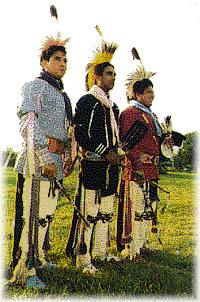
The park was recently named to honor Academy Award Actor and Pawhuska native, Ben Johnson. Mr. Johnson has appeared in over 300 movies and won the Academy Award for Best Supporting Actor in "The Last Picture Show."
Born in Oklahoma of Cherokee-Irish stock, Ben Johnson virtually grew up in the saddle. A champion rodeo rider in his teens, Johnson headed to Hollywood in 1940 to work as a horse wrangler on Howard Hughes' The Outlaw. He went on to double for Wild Bill Elliot and other western stars, then in 1947 was hired as Henry Fonda's riding double in director John Ford's Fort Apache (1948). Ford sensed star potential in the young, athletic, slow-speaking Johnson, casting him in the speaking role of Trooper Tyree in both She Wore a Yellow Ribbon (1949) and Rio Grande (1950). In 1950, Ford co-starred Johnson with another of his protégés, Harry Carey Jr., in Wagonmaster (1950). Now regarded as a classic, Wagonmaster failed to register at the box office; perhaps as a result, full stardom would elude Johnson for over two decades. He returned periodically to the rodeo circuit, played film roles of widely varying sizes (his best during the 1950s was the pugnacious Chris in George Stevens' Shane [1953]), and continued to double for horse-shy stars. He also did plenty of television, including the recurring role of Sleeve on the 1966 western series The Monroes. A favorite of director Sam Peckinpah, Johnson was given considerable screen time in such Peckinpah gunfests as Major Dundee (1965) and The Wild Bunch (1969). It was Peter Bogdanovich, a western devotee from way back, who cast Johnson in his Oscar-winning role: the sturdy, integrity-driven movie house owner Sam the Lion in The Last Picture Show (1971). When not overseeing his huge horse-breeding ranch in Sylmar, California, Ben Johnson has continued playing unreconstructed rugged individualists in such films as My Heroes Have Always Been Cowboys (1991) and Radio Flyer (1992), in TV series like Dream West (1986, wherein Johnson was cast as frontier trailblazer Jim Bridger), and made-for-TV films along the lines of the Bonanza revivals of the 1990s. ~ Hal Erickson, All Movie Guide
